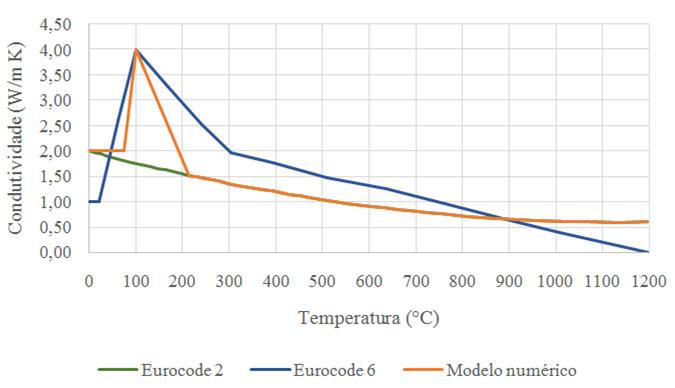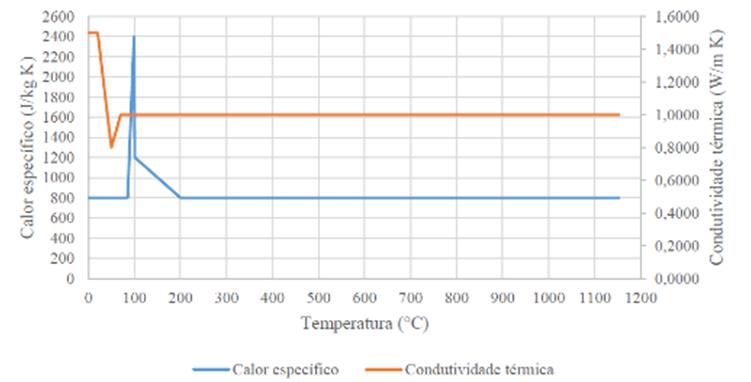Abstract
Fire situations must be considered in structural design to minimize risks to the safety of buildings, since high temperatures ultimately result in the decrease of the mechanical properties of building materials and lead to the spread of flames to adjacent rooms. However, Brazilian standards do not provide design procedures for evaluating structural masonry at high temperatures, therefore engineers usually apply foreign standards, which are based on the thermal properties of the materials used in their countries. This study aims to evaluate the thermal behaviour of concrete masonry walls in fire situations by means of numerical analysis, taking the experimental results presented in Dupim (2019) as reference. The thermal properties of the materials in the numerical model were calibrated according to the Eurocode, and temperature increases on the masonry surfaces were simulated by using temperature-time curves obtained in experimental tests. The numerical results are in good agreement with the experimental measurements, which were carried out at various points in the masonry cross section, with maximum temperature differences below 10%. The fire resistance of a 14 cm-thick masonry wall, according to the thermal insulation criterion, was equal to 60 min in the numerical analysis, which is close to the experimental result of 62 min taken as reference.
Keywords:
Structural masonry; Fire; Thermal insulation; Numerical analysis; Thermal analysis

 Thumbnail
Thumbnail
 Thumbnail
Thumbnail
 Thumbnail
Thumbnail
 Thumbnail
Thumbnail
 Thumbnail
Thumbnail
 Thumbnail
Thumbnail
 Thumbnail
Thumbnail
 Thumbnail
Thumbnail
 Thumbnail
Thumbnail
 Thumbnail
Thumbnail
 Thumbnail
Thumbnail
 Thumbnail
Thumbnail
 Thumbnail
Thumbnail
 Thumbnail
Thumbnail
 Thumbnail
Thumbnail
 Thumbnail
Thumbnail
 Thumbnail
Thumbnail
 Thumbnail
Thumbnail










 Fonte: adaptada de
Fonte: adaptada de 





